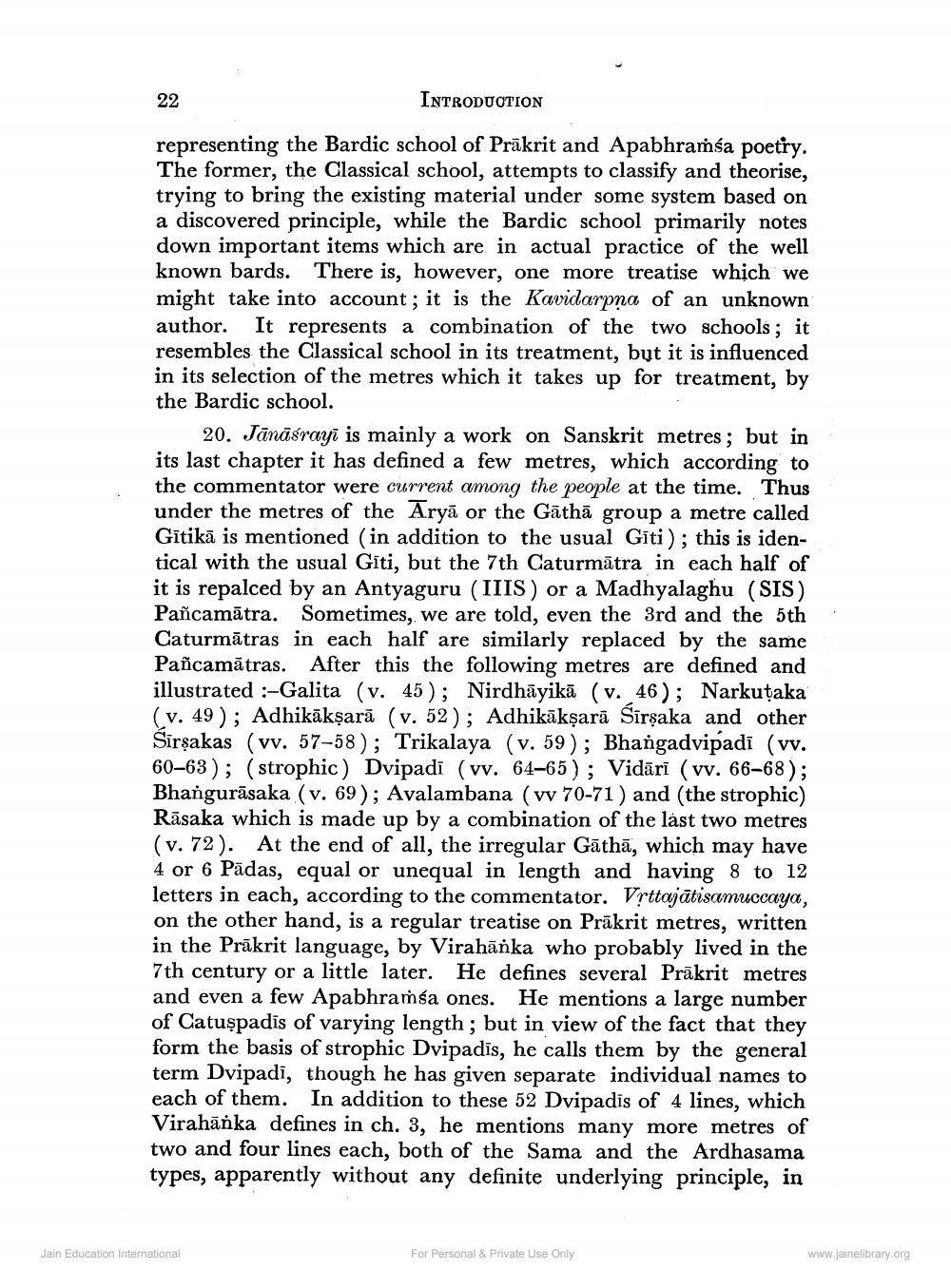________________
INTRODUCTION
representing the Bardic school of Prakrit and Apabhramśa poetry. The former, the Classical school, attempts to classify and theorise, trying to bring the existing material under some system based on a discovered principle, while the Bardic school primarily notes down important items which are in actual practice of the well known bards. There is, however, one more treatise which we might take into account; it is the Kavidarpna of an unknown author. It represents a combination of the two schools; it resembles the Classical school in its treatment, but it is influenced in its selection of the metres which it takes up for treatment, by
the Bardic school.
22
20. Jānāśrayī is mainly a work on Sanskrit metres; but in its last chapter it has defined a few metres, which according to the commentator were current among the people at the time. Thus under the metres of the Arya or the Gatha group a metre called Gitikā is mentioned (in addition to the usual Giti); this is identical with the usual Giti, but the 7th Caturmatra in each half of it is repalced by an Antyaguru (IIIS) or a Madhyalaghu (SIS) Pañcamātra. Sometimes, we are told, even the 3rd and the 5th Caturmatras in each half are similarly replaced by the same Pañcamātras. After this the following metres are defined and illustrated :-Galita (v. 45); Nirdhāyikā (v. 46); Narkuṭaka (v. 49); Adhikākṣarā (v. 52); Adhikākṣarā Sīrṣaka and other Sirsakas (vv. 57-58); Trikalaya (v. 59); Bhangadvipadi (vv. 60-63); (strophic) Dvipadi (vv. 64-65); Vidārī (vv. 66-68); Bhangurāsaka (v. 69); Avalambana (vv 70-71) and (the strophic) Rāsaka which is made up by a combination of the last two metres (v. 72). At the end of all, the irregular Gāthā, which may have 4 or 6 Padas, equal or unequal in length and having 8 to 12 letters in each, according to the commentator. Vṛttajatisamuccaya, on the other hand, is a regular treatise on Prakrit metres, written in the Prakrit language, by Virahaňka who probably lived in the 7th century or a little later. He defines several Prakrit metres and even a few Apabhramsa ones. He mentions a large number of Catuspadis of varying length; but in view of the fact that they form the basis of strophic Dvipadis, he calls them by the general term Dvipadi, though he has given separate individual names to each of them. In addition to these 52 Dvipadis of 4 lines, which Virahanka defines in ch. 3, he mentions many more metres of two and four lines each, both of the Sama and the Ardhasama types, apparently without any definite underlying principle, in
Jain Education International
For Personal & Private Use Only
www.jainelibrary.org




